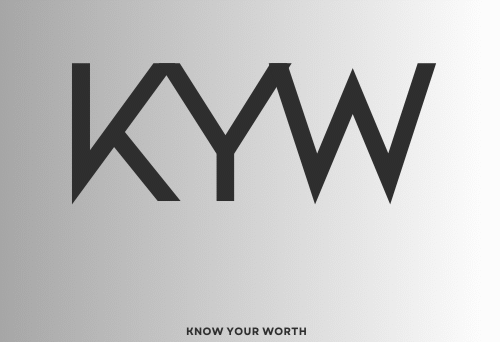This is a long read. Want to see a video summary? Click here

Picture this: You’re sitting at your desk at 2 AM, again, finishing another project for a client who pays you the same rate you charged three years ago. Your skills have improved dramatically, your portfolio is stronger, and you’re delivering better results than ever. Yet somehow, you’re still afraid to ask for what you’re actually worth.
Sound familiar? You’re not alone. The fear of raising freelance rates is one of the biggest obstacles preventing talented freelancers from building sustainable, profitable businesses. But here’s the reality: if you’re not regularly increasing your rates, you’re essentially giving yourself a pay cut year after year due to inflation and your growing expertise.
This comprehensive guide will walk you through proven freelance pricing strategies that help you increase your income while keeping your best clients happy. No more sleepless nights wondering if you should finally ask for that raise you deserve.
Why Are Freelancers Afraid to Raise Their Rates?
Question: What psychological barriers prevent experienced freelancers from increasing their prices?
Answer: The fear of raising freelance rates stems from three core anxieties: loss aversion (fearing you’ll lose existing clients), imposter syndrome (feeling you don’t deserve higher rates), and scarcity mindset (believing good clients are rare and irreplaceable).
Evidence: According to a 2023 Freelancers Union survey, 67% of freelancers have never raised their rates with existing clients, despite 78% believing they’re undercharging. The study revealed that freelancers who do raise rates typically retain 85% of their client base, yet this fear persists across the industry.
The most common fears include:
- Client abandonment: “They’ll drop me for someone cheaper”
- Market positioning: “Maybe I’m not worth what others charge”
- Relationship damage: “This will make things awkward”
- Competition pressure: “There’s always someone willing to work for less”
Here’s what’s actually happening: established clients value consistency and quality over rock-bottom pricing. A freelancer who’s been delivering excellent work for months or years has built significant switching costs. Finding, vetting, and onboarding a replacement involves time, risk, and often higher total costs for the client.
When Is the Right Time to Increase Your Freelance Rates?

Learn more at www.knowyourworth.pro Check the free rate calculator and subscribe to the newsletter
Question: How do you identify the optimal timing for freelancer rate negotiation?
Answer: The right time to raise rates occurs when you can demonstrate increased value through improved skills, expanded scope, stronger results, or changed market conditions. Key triggers include completing major projects, reaching service anniversaries, or experiencing high demand for your services.
Evidence: Industry data shows that freelancers who increase rates annually grow their income 23% faster than those who raise rates sporadically. The most successful timing patterns include:
Project completion milestones: After successfully delivering a significant project or campaign. This timing leverages fresh evidence of your capabilities and positions the increase as a natural progression.
Service anniversaries: Annual or bi-annual reviews create predictable expectations. Many successful freelancers build rate review clauses into their initial contracts, normalizing the process from day one.
Skill upgrades: After completing certifications, mastering new tools, or expanding service offerings. For example, a web developer who learns advanced e-commerce integrations or a writer who specializes in technical content can justify premium pricing.
Market demand signals: When you’re turning away work, booking out weeks in advance, or receiving multiple referrals. High demand indicates your current pricing is below market value.
Inflation adjustments: Annual cost-of-living increases of 3-5% are standard in employee compensation and equally valid for freelance services.
A practical approach: Set calendar reminders every six months to evaluate your rates against current market conditions, skill level, and demand for your services.
How Do You Communicate Rate Increases Effectively?
Question: What’s the best way to announce price increases without damaging client relationships?
Answer: Effective rate increase communication follows a three-part framework: provide advance notice (4-6 weeks), clearly explain the reasoning, and offer transition options that demonstrate flexibility while maintaining your new pricing structure.
Evidence: Freelancers who provide structured, professional rate increase notifications retain 89% of their clients compared to 62% retention for those who mention increases casually or without context.
Here’s a proven email template for communicating rate increases:
Subject: Service Rate Update – Effective [Date]
Hi [Client Name],
I hope this email finds you well. I wanted to give you advance notice of an upcoming adjustment to my service rates.
Effective [Date – 6 weeks from now], my rate for [specific service] will increase from $X to $Y per [hour/project/word]. This represents my first rate adjustment in [time period] and reflects both the expanded value I now provide and current market conditions.
Over our time working together, I’ve:
- [Specific achievement or improvement]
- [Quantifiable result you’ve delivered]
- [New skill or capability you’ve developed]
I value our working relationship and want to ensure a smooth transition. I’m happy to discuss how this affects your upcoming projects and explore options that work within your budget.
I’m confident this adjustment positions us both for continued success. Please let me know if you’d like to schedule a brief call to discuss.
Best regards, [Your name]
Key elements that make this effective:
- Specific timeline: Six weeks provides planning time without feeling rushed
- Justification: Links the increase to tangible value and market realities
- Relationship focus: Emphasizes partnership over transactions
- Flexibility signal: Opens dialogue without compromising the increase
What Strategies Prevent Client Loss During Rate Changes?

Learn more at www.knowyourworth.pro Check the free rate calculator and subscribe to the newsletter
Question: How can freelancers implement pricing without losing clients while maintaining their new rate structure?
Answer: Client retention during rate increases requires a value-first approach: grandfathering loyal clients for limited periods, offering package deals at new rates, and clearly communicating the enhanced value proposition that justifies higher pricing.
Evidence: Freelancers who use strategic transition methods retain 91% of their client base during rate increases, compared to 73% retention for those who implement blanket increases without accommodation options.
The Graduated Approach Strategy:
Phase 1 – Value Demonstration (Weeks 1-2) Document and communicate recent wins, improvements, or expanded services you’ve provided. Create a brief case study showing ROI or results you’ve delivered.
Phase 2 – Rate Announcement (Weeks 3-4) Send your rate increase notification using the template above, emphasizing partnership and providing options.
Phase 3 – Transition Options (Weeks 5-8) Offer structured choices that respect your new rates while providing client flexibility:
- Current rate extension: “I can honor current rates for projects booked before [date]”
- Package pricing: “While my hourly rate is increasing, I can offer project packages that provide better value”
- Reduced scope options: “At the previous rate, I can offer a streamlined version of the service”
The Loyalty Buffer Method: For long-term clients (6+ months), consider implementing increases in two phases: 50% of the intended increase immediately, with the remainder in 3-6 months. This approach recognizes the relationship value while moving toward market rates.
Package Repositioning: Instead of hourly rate increases, shift to value-based project pricing. For example, a graphic designer might move from “$75/hour” to “Logo design package: $1,500” – which often represents higher effective hourly rates while providing clients with predictable project costs.
How Do You Justify Higher Rates with Demonstrable Value?
Question: What evidence-based approaches help freelancers command premium pricing through value demonstration?
Answer: Value justification requires quantifiable proof of your impact through client results, efficiency improvements, specialized expertise, and market positioning. The most effective approach combines hard metrics with strategic positioning that differentiates you from lower-priced competitors.
Evidence: Freelancers who document and communicate client results charge 34% higher rates than those who compete primarily on price. Value-based pricing strategies show the strongest correlation with freelance income growth and client retention.
Building Your Value Documentation System:
Results Tracking:
- Website traffic increases, conversion improvements, or sales growth you’ve influenced
- Time saved through your processes or expertise
- Cost reductions you’ve identified or implemented
- Project completion rates, timeline improvements, or quality metrics
Expertise Positioning:
- Specialized certifications or training
- Industry recognition or awards
- Unique methodologies or approaches
- Technology stack advantages
Efficiency Advantages:
- Faster turnaround times due to experience
- Fewer revisions needed due to expertise
- Better project scoping and requirement gathering
- Established vendor relationships or tool expertise
Case Study Example: “Over the past year, the content strategy I developed increased your organic traffic by 127% and generated 23 qualified leads that converted to $89,000 in new business. My strategic approach and industry expertise delivered an ROI of approximately 890% on your content investment.”
This type of documentation transforms rate discussions from cost negotiations to investment conversations.
What Should You Do If a Client Pushes Back on Rate Increases?
Question: How do you handle client objections while maintaining your pricing integrity and professional relationships?
Answer: Client pushback requires a structured response that acknowledges their concerns while reinforcing your value proposition. The key is distinguishing between clients who need education about your value versus those who genuinely can’t afford your services.
Evidence: Professional services firms report that 67% of initial rate increase objections are overcome through value reframing, while 22% result in modified service arrangements that maintain profitability. Only 11% result in client loss when handled strategically.
The HEAR Framework for Objections:
Halt – Don’t immediately defend or justify. Listen fully to their concern.
Empathize – “I understand budget constraints are a real consideration for your business.”
Acknowledge – “You’ve been a valued client, and I want to find a solution that works.”
Respond – Present options that maintain your rate integrity while addressing their needs.
Common Objections and Responses:
“Your rate is higher than other freelancers” Response: “You’re right that you could find lower rates. What you’re investing in is the track record we’ve built together, the efficiency I bring from understanding your business, and the results I’ve consistently delivered. Let me show you the ROI comparison…”
“We don’t have budget for increased rates” Response: “I understand budget constraints. Would it help if we adjusted the scope to fit your budget while maintaining the new rate structure? For example, we could focus on the highest-impact deliverables within your budget.”
“We’ve been working together for years” Response: “That relationship is exactly why I wanted to give you advance notice and discuss options. Our history together has allowed me to develop specialized knowledge about your business that actually makes me more valuable, not less expensive.”
Strategic Responses That Work:
- Reframe the conversation: Move from cost to investment and ROI
- Offer alternatives: Different service levels at your new rate
- Set boundaries: Be willing to walk away from clients who can’t meet your minimum viable rates
- Document everything: Keep records of the conversation and any agreements reached
Advanced Freelance Pricing Strategies for Long-Term Growth

Question: What sophisticated pricing approaches help established freelancers maximize their freelance income while building sustainable businesses?
Answer: Advanced pricing strategies include value-based pricing models, retainer arrangements, tiered service offerings, and strategic client portfolio management that reduces dependence on any single client relationship.
Evidence: Freelancers using diversified pricing strategies report 43% higher annual income growth and 28% better work-life balance compared to those relying solely on hourly billing.
Value-Based Pricing Implementation: Instead of billing time, price based on project outcomes and client value. A marketing freelancer might charge based on lead generation targets rather than hours spent. This approach often results in higher effective hourly rates while providing clients with predictable costs and clear success metrics.
Retainer Model Benefits: Monthly retainers provide income stability and client commitment. Structure retainers with clear scope boundaries: “This retainer includes X hours of work monthly for defined services. Additional requests are billed at $Y/hour.” This model typically commands 15-20% premium rates due to the guaranteed commitment.
Tiered Service Offerings: Create “Good-Better-Best” options that guide clients toward higher-value services:
- Essential: Basic service delivery
- Professional: Enhanced service with additional features
- Premium: Comprehensive service with strategic consultation
Client Portfolio Strategy: Maintain a mix of client types and rate levels. The “80/20 rule” applied to freelancing suggests that 80% of your income should come from clients paying premium rates, with 20% from newer or developing client relationships. This approach reduces financial risk while maintaining growth opportunities.
Building Confidence in Your Freelance Rate Negotiations
Question: How do established freelancers overcome self-doubt and develop pricing confidence?
Answer: Pricing confidence develops through market research, peer networking, success documentation, and gradual rate progression that builds evidence of your market value.
Evidence: Freelancers who actively network with peers and track industry rates are 56% more likely to charge market-appropriate rates and report higher job satisfaction.
Confidence-Building Actions:
Market Research: Regularly survey industry rate reports, freelance marketplaces, and peer networks to understand current pricing ranges for your expertise level.
Success Documentation: Keep a “wins folder” of client testimonials, project successes, and positive feedback. Review this before any rate discussion.
Peer Networks: Join freelancer communities, attend industry events, and maintain relationships with other professionals at your level. This provides reality checks on your pricing and market position.
Gradual Progression: Implement rate increases systematically rather than making dramatic jumps. Annual increases of 10-15% are generally well-received and build confidence over time.
Professional Development: Continuously invest in skills, certifications, and expertise that justify premium pricing. The investment in yourself provides concrete justification for rate increases.
Measuring Success: Tracking Your Rate Increase Results
Question: How do you evaluate the effectiveness of your freelance business growth strategies and rate increase initiatives?
Answer: Success measurement requires tracking both financial metrics (income growth, client retention rates, project profitability) and business health indicators (client satisfaction, referral rates, work-life balance improvements).
Evidence: Freelancers who systematically track their pricing decisions and outcomes are 73% more likely to achieve their income goals and maintain long-term client relationships.
Key Performance Indicators:
Financial Metrics:
- Monthly recurring revenue growth
- Average project value increases
- Client lifetime value changes
- Effective hourly rate improvements
Relationship Metrics:
- Client retention rate post-increase
- Referral frequency and quality
- Client satisfaction scores
- Repeat project rates
Business Health Indicators:
- Time spent on administrative tasks vs. billable work
- Stress levels and work-life balance
- Professional development investment ROI
- Market positioning and competitive advantage
Tracking Implementation: Create a simple spreadsheet or use project management tools to monitor these metrics monthly. Set quarterly review periods to assess progress and adjust strategies. The goal is building a sustainable freelance business that grows in both income and professional satisfaction.
Conclusion: Your Roadmap to Higher Freelance Rates

Learn more at www.knowyourworth.pro Check the free rate calculator and subscribe to the newsletter
Raising your freelance rates doesn’t have to be a nerve-wracking experience that costs you clients. The freelancers who successfully increase their income year over year follow a systematic approach: they document their value, communicate professionally, provide transition options, and maintain confidence in their pricing decisions.
Remember these key strategies:
- Timing matters: Use project completions, anniversaries, or skill upgrades as natural increase points
- Communication is crucial: Give advance notice with clear value justification
- Flexibility builds relationships: Offer transition options that respect both your rates and client needs
- Value trumps price: Focus conversations on ROI and results rather than cost comparisons
- Confidence comes from preparation: Document successes, research market rates, and maintain peer networks
The fear of losing clients often proves unfounded. Quality clients who value your work are typically willing to pay fair rates for continued excellent service. Those who aren’t may not be the clients you want for long-term business growth anyway.
Your expertise has value, and that value grows over time. Don’t let fear of change prevent you from building the sustainable, profitable freelance business you deserve. Start with small, systematic increases and build from there. Your future self will thank you for taking action today.
Ready to optimize your freelance pricing strategy? Visit www.knowyourworth.pro for additional resources, rate calculators, and community support to help you navigate pricing decisions with confidence. Connect with other freelancers who’ve successfully grown their businesses and access tools designed specifically for pricing optimization and client communication.



